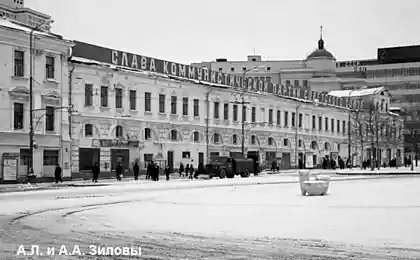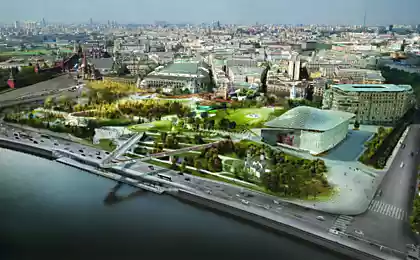1484
Last Stalin skyscraper
Office building in Zaryadye was the last of the Stalinist skyscrapers laid down in the day eight hundred anniversary of Moscow. It was not completed - prevented the death of Stalin. But work on the construction of the stylobate to the spring of 1953, had almost completed. According to some sources, frame of the building managed to build almost half of its height, and later disassembled and used as the steel structures for the stadium in Luzhniki. By hiding the technical floor stylobate and two-story underneath concrete bunker, which is probably intended to be used as a bomb shelter.
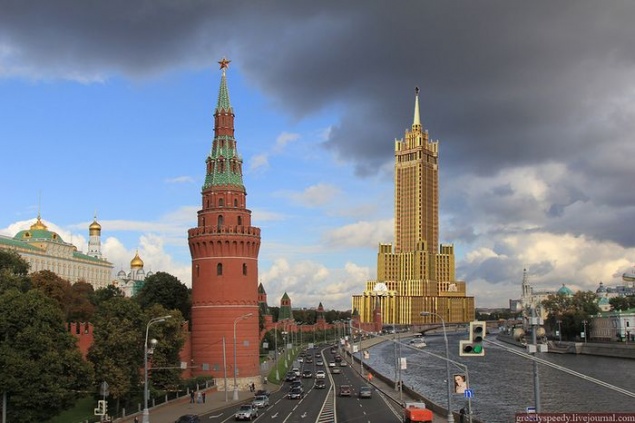
The old charges.
Prolomnaya gates. Photo mid-1920s.

Mokrinskiy alley. 1908.

Mokrinskiy alley. 40s.
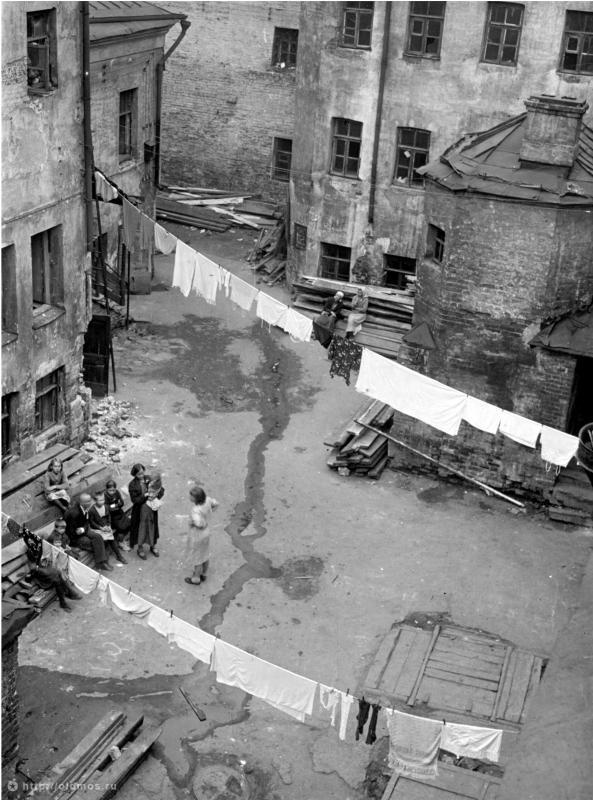
Old Zaryadye not consistent with the socialist idea of the perfect city.

Mokrinskiy alley. Start 40s.

Pskov alley. Start 40s.

A few hundred meters from the Kremlin.

View of the Kremlin and Christ the Savior Cathedral.

The project is a high-rise building in Zaryadye.
Turning urban development particularly pompous buildings comes into strong conflict with what was a reality in the post-war years. Although high-rise buildings and were gipnogeshtaltom for future generations of the people, nevertheless criticism befell the creators and constructed buildings, not enough whole generation of modern architects.
According to some data in the eighth high-rise would place the People's Commissariat of Heavy Machinery. We offer competitive projects before the war, the building to house the agency looked convincing, but here it seemed very fate smiled Narkomtyazhmashu. However, none of the literary source departmental affiliation of the building is not specified. As with other administrative buildings, such as the Smolensk Square, where populated MFA.
From the magazine "Ogonyok" on April 27, 1952: "The house is in charge will be the highest in Moscow on 37 floors, and over it a tower with a tent and state emblem. Tower height slightly less than the entire building, erected at the Beautiful Gate. 275 meters - this is the distance from home base to the highest point of it. " Thus, the building would be higher Zaryadye MSU 40 meters, although the volume inferior to him and 1 250 thousand cubic meters would be the second in the city. It was planned 2000 operating rooms area of 72,000 square meters, not including savings banks, post, telegraph, hospitals, printing, libraries and reading rooms. Assembly hall can accommodate 1300-1500 viewers, two conference rooms - for 350 people. The building was in Zaryadye overlap with its neighbor on Tinkers embankment. "The appearance of the house giant must comply with its" growth "and other purposes. He escaped with large ceramic plates, white cast stone, limestone, granite. On a sunny day, the building can be seen for many kilometers from Moscow. Construction of the house is completely finished by 1954. »
Each of the seven high-rise buildings has a sister, and building on the waterfront Tinkers never get yourself a little sister next door.
"Designing high rise buildings passed a very unusual way. As a rule, the construction of key buildings of Stalin was preceded by long and painful multi-stage competitions. And then as soon as possible, in just two years, from January 1947 to the spring of 1949 without any public competitions arise projects eight enormous buildings, strikingly similar to each other ... 1945 - a sharp rise Chechulina career. This year he became the chief architect of Moscow, corresponding member of the Academy of Architecture. In 1946 he became a deputy of the Supreme Council for the second time elected a deputy of the Moscow Soviet, and includes in its executive committee ... Apparently, he played a decisive role in the selection and Chechulin sponsors. This was all the more important that most likely it was originally on the candidates for the Stalin Prize. But control over the design of the buildings from the Chechulina boiled down to, to make them as similar. Chechulin clearly had the authority to direct the work of other authors formal skyscrapers. »
Dmitri Chechulin. Photo: GNEHM them. Shchusev.
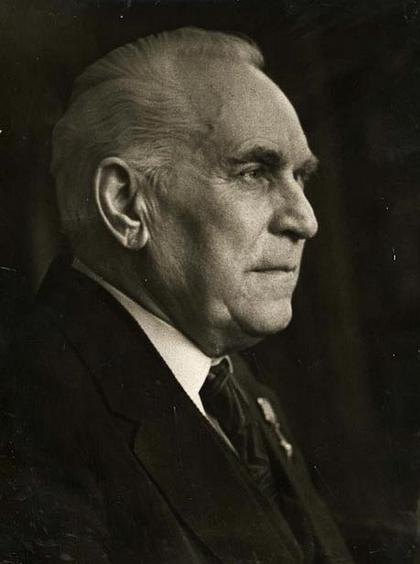

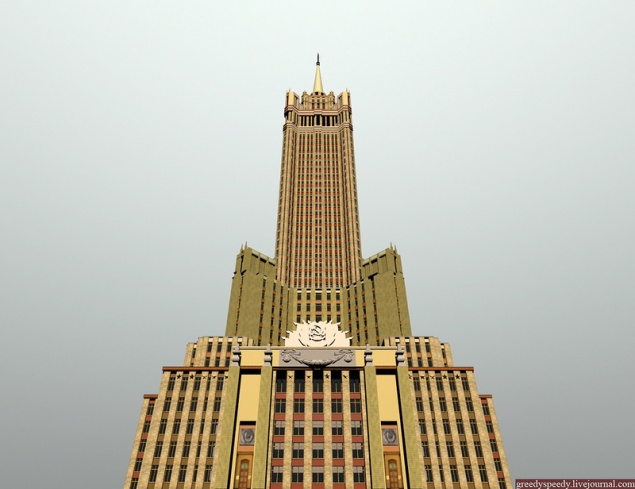





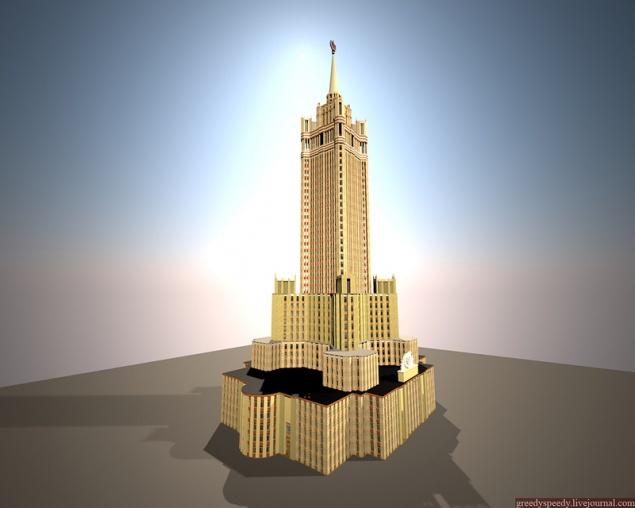






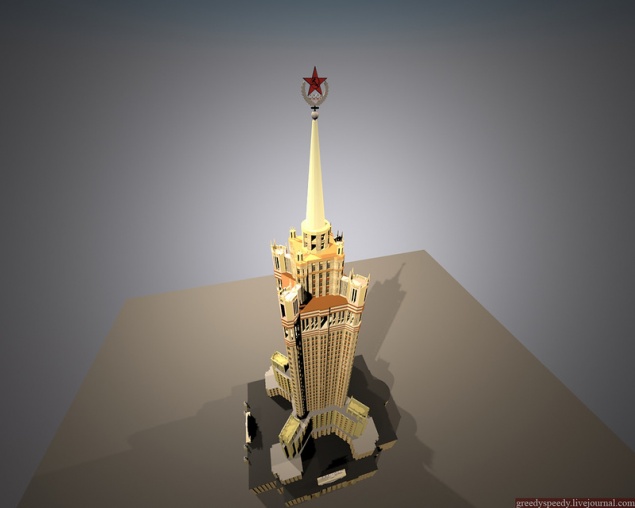


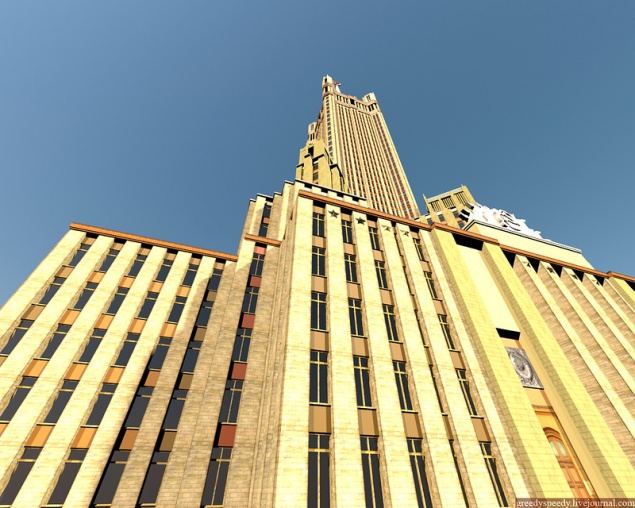


Two houses that were supposed to coexist with each other. Kotelniki skyscraper was built, the building is no charge.

One of the early projects Zariadye ...

... And the hotel "Beijing", built in 1940-1956, respectively, resemble each other.

Demolished hotel "Russia". On this site is now a vacant lot.
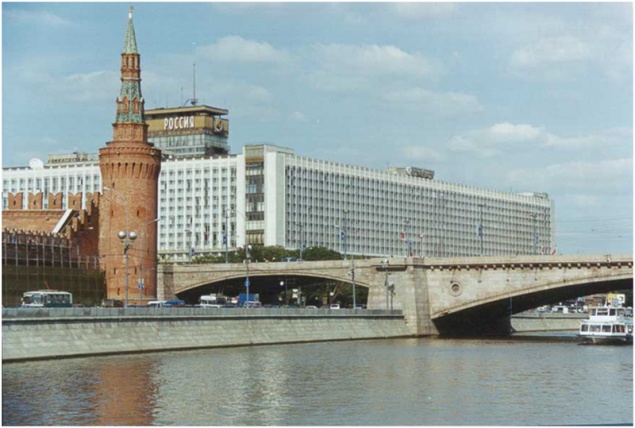
"In recent times there is information that the eight buildings planned to build for his department LP Beriya that through the Ministry of Interior was in charge of the Moscow high-rise building. But after his arrest mothballed construction, and in 1954 it has clarified the future plans of building construction. The hardest of all the blow of fate suffered D.N.Chechulin academician of architecture, designed and built that building. What happened, he took as a personal tragedy for a long time and could not come to his senses. Only after ten years - from 1964 to 1967 - on the podium already existing project D.N.Chechulina hotel was built in Russia. Its proportions allow visually assess the scale of the planned construction - the size of goodies comparable to the size of the lower height of only five floors, stage high-rise building. The very same hotel looked at inherited podium rather clumsy. »
Source: greedyspeedy.livejournal.com

The old charges.
Prolomnaya gates. Photo mid-1920s.

Mokrinskiy alley. 1908.

Mokrinskiy alley. 40s.

Old Zaryadye not consistent with the socialist idea of the perfect city.

Mokrinskiy alley. Start 40s.

Pskov alley. Start 40s.

A few hundred meters from the Kremlin.

View of the Kremlin and Christ the Savior Cathedral.

The project is a high-rise building in Zaryadye.
Turning urban development particularly pompous buildings comes into strong conflict with what was a reality in the post-war years. Although high-rise buildings and were gipnogeshtaltom for future generations of the people, nevertheless criticism befell the creators and constructed buildings, not enough whole generation of modern architects.
According to some data in the eighth high-rise would place the People's Commissariat of Heavy Machinery. We offer competitive projects before the war, the building to house the agency looked convincing, but here it seemed very fate smiled Narkomtyazhmashu. However, none of the literary source departmental affiliation of the building is not specified. As with other administrative buildings, such as the Smolensk Square, where populated MFA.
From the magazine "Ogonyok" on April 27, 1952: "The house is in charge will be the highest in Moscow on 37 floors, and over it a tower with a tent and state emblem. Tower height slightly less than the entire building, erected at the Beautiful Gate. 275 meters - this is the distance from home base to the highest point of it. " Thus, the building would be higher Zaryadye MSU 40 meters, although the volume inferior to him and 1 250 thousand cubic meters would be the second in the city. It was planned 2000 operating rooms area of 72,000 square meters, not including savings banks, post, telegraph, hospitals, printing, libraries and reading rooms. Assembly hall can accommodate 1300-1500 viewers, two conference rooms - for 350 people. The building was in Zaryadye overlap with its neighbor on Tinkers embankment. "The appearance of the house giant must comply with its" growth "and other purposes. He escaped with large ceramic plates, white cast stone, limestone, granite. On a sunny day, the building can be seen for many kilometers from Moscow. Construction of the house is completely finished by 1954. »
Each of the seven high-rise buildings has a sister, and building on the waterfront Tinkers never get yourself a little sister next door.
"Designing high rise buildings passed a very unusual way. As a rule, the construction of key buildings of Stalin was preceded by long and painful multi-stage competitions. And then as soon as possible, in just two years, from January 1947 to the spring of 1949 without any public competitions arise projects eight enormous buildings, strikingly similar to each other ... 1945 - a sharp rise Chechulina career. This year he became the chief architect of Moscow, corresponding member of the Academy of Architecture. In 1946 he became a deputy of the Supreme Council for the second time elected a deputy of the Moscow Soviet, and includes in its executive committee ... Apparently, he played a decisive role in the selection and Chechulin sponsors. This was all the more important that most likely it was originally on the candidates for the Stalin Prize. But control over the design of the buildings from the Chechulina boiled down to, to make them as similar. Chechulin clearly had the authority to direct the work of other authors formal skyscrapers. »
Dmitri Chechulin. Photo: GNEHM them. Shchusev.





















Two houses that were supposed to coexist with each other. Kotelniki skyscraper was built, the building is no charge.

One of the early projects Zariadye ...

... And the hotel "Beijing", built in 1940-1956, respectively, resemble each other.

Demolished hotel "Russia". On this site is now a vacant lot.

"In recent times there is information that the eight buildings planned to build for his department LP Beriya that through the Ministry of Interior was in charge of the Moscow high-rise building. But after his arrest mothballed construction, and in 1954 it has clarified the future plans of building construction. The hardest of all the blow of fate suffered D.N.Chechulin academician of architecture, designed and built that building. What happened, he took as a personal tragedy for a long time and could not come to his senses. Only after ten years - from 1964 to 1967 - on the podium already existing project D.N.Chechulina hotel was built in Russia. Its proportions allow visually assess the scale of the planned construction - the size of goodies comparable to the size of the lower height of only five floors, stage high-rise building. The very same hotel looked at inherited podium rather clumsy. »
Source: greedyspeedy.livejournal.com





